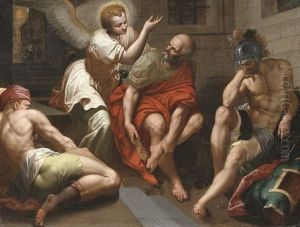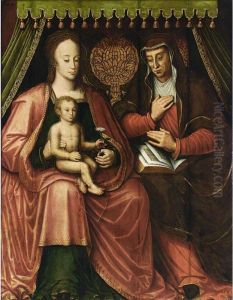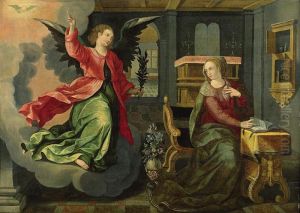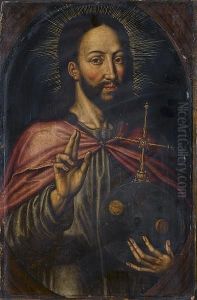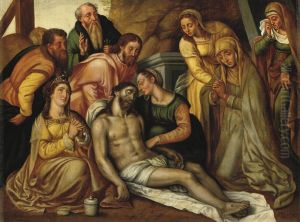Anthonie Claeissens Paintings
Anthonie Claeissens was a Flemish painter born in Bruges, in the historical region of Flanders (present-day Belgium), around 1536. His artistic career unfolded during a period when the Northern Renaissance was giving way to Mannerism, and his work is characterized by a blend of these styles. Claeissens is primarily known for his detailed historical and allegorical paintings. Although not as widely recognized as some of his contemporaries, Claeissens made significant contributions to the art world during his lifetime.
Claeissens' family was involved in the arts; his father was also a painter, which likely provided him with his initial training and exposure to the art world. His works often displayed a strong sense of composition and a keen attention to detail, which was typical of the Northern Renaissance tradition. His paintings were marked by the use of vivid colors and intricate details. Claeissens was also known to include complex iconography in his work, which reflected the intellectual and humanist currents of his time.
Throughout his career, Claeissens was actively involved in the cultural life of Bruges. He held the position of 'stadsschilder' (city painter) of Bruges, which was a prestigious post that entailed creating works for the city's municipal buildings and participating in the decoration of public festivities. His art was well-received, and he gained a reputation as a skilled painter, receiving commissions from local guilds, religious institutions, and the city government.
Among his notable works are the 'Triumph of Bacchus' (1589), 'The Battle of Time against Death' (1570s), and a series of paintings depicting the history of Bruges for the town hall of the city. His historical paintings often included elaborate scenes filled with numerous figures, demonstrating both his narrative ability and his talent for organizing complex compositions.
Anthonie Claeissens passed away in 1613 in Bruges. Although his work was appreciated during his lifetime, his fame did not endure as prominently as that of some of his contemporaries. Nevertheless, his paintings continue to be of interest to art historians and collectors, particularly those focusing on the art and culture of the Low Countries during the transition from the Renaissance to the Mannerist period.
